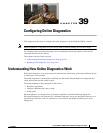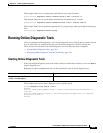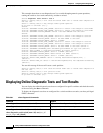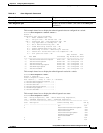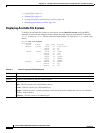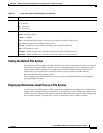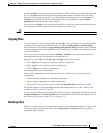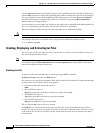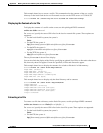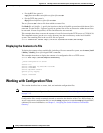
A-3
Catalyst 2960 and 2960-S Switch Software Configuration Guide
OL-8603-09
Appendix A Working with the Cisco IOS File System, Configuration Files, and Software Images
Working with the Flash File System
Setting the Default File System
You can specify the file system or directory that the system uses as the default file system by using the
cd filesystem: privileged EXEC command. You can set the default file system to omit the filesystem:
argument from related commands. For example, for all privileged EXEC commands that have the
optional filesystem: argument, the system uses the file system specified by the cd command.
By default, the default file system is flash:.
You can display the current default file system as specified by the cd command by using the pwd
privileged EXEC command.
Displaying Information about Files on a File System
You can view a list of the contents of a file system before manipulating its contents. For example, before
copying a new configuration file to flash memory, you might want to verify that the file system does not
already contain a configuration file with the same name. Similarly, before copying a flash configuration
file to another location, you might want to verify its filename for use in another command.
Flags Permission for file system.
ro—read-only.
rw—read/write.\
wo—write-only.
Prefixes Alias for file system.
flash:—Flash file system.
nvram:—NVRAM.
null:—Null destination for copies. You can copy a remote file to null to find its size.
rcp:—Remote Copy Protocol (RCP) network server.
system:—Contains the system memory, including the running configuration.
tftp:—TFTP network server.
xmodem:—Obtain the file from a network machine by using the Xmodem protocol.
ymodem:—Obtain the file from a network machine by using the Ymodem protocol.
Table A-1 show file systems Field Descriptions (continued)
Field Value



